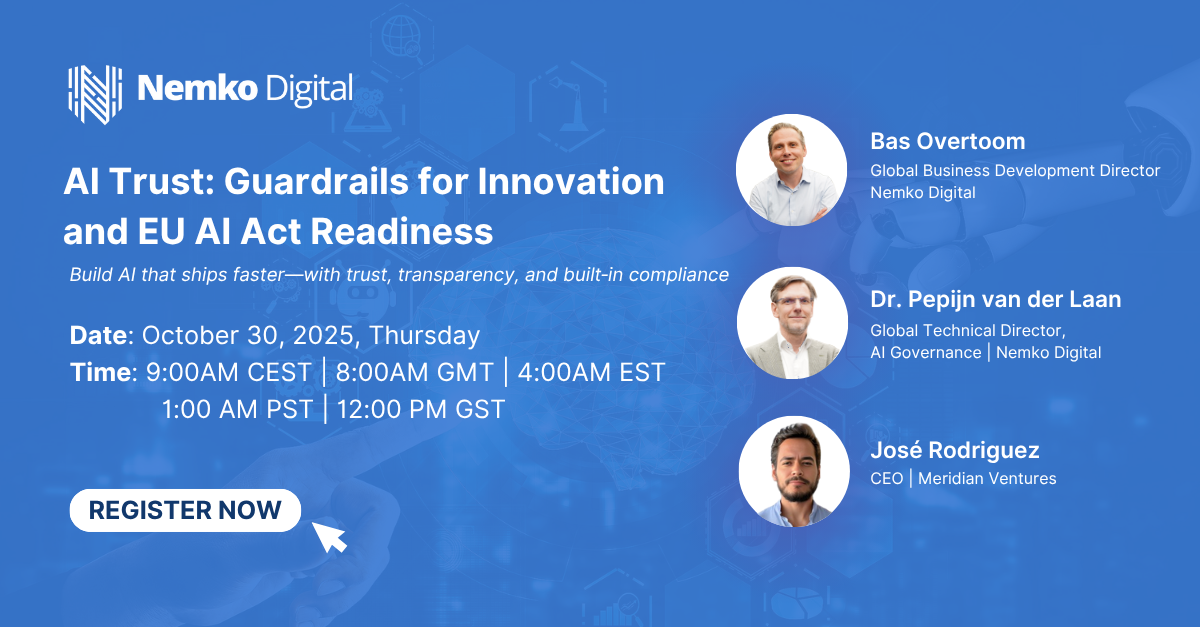AI Trust in Education – What is it?
Education systems are being asked to deliver more with less: support diverse learners, protect academic integrity, reduce administrative burden... the list goes on. This is leaving education leaders to seek innovative ways to close resource gaps that prevent them from reaching their goals. If well scope, AI can help them do this. It can help freeing teacher time, improve student experience, and simplify routine processes—provided it is deployed with clear safeguards and human oversight.
However, AI inevitably carries risks—data privacy, bias, over-reliance, and more—across every domain. Its adoption should therefore be governed by clear policies and transparency, ensuring AI augments, not replaces, teachers and staff, with trust and equity at the centre of deployment.
Four Main Application Areas
Think of AI as a quiet co-pilot: it drafts lesson outlines and practice questions so teachers can focus on instruction; it answers admissions questions using your approved policies; it surfaces early signals that a student may need help—so a human can act. These are some examples in which AI can be used, but as you can see below, there is much more: AI for teaching and content, student support, analytics, and administrative tasks are main domains in which AI is used in education.

Use case: Improving the First Touch Point for Prospective Students
A UAE university partnered with an AI provider to launch a retrieval-augmented generation (RAG) chat assistant as the first touchpoint in the admissions funnel. The assistant delivers instant answers about how to apply, clarifies eligibility, and routes prospects to program-specific resources. It also flags high-intent leads and eligible candidates for advisors, reducing drop-offs and freeing staff time.
Nemko Digital supported both parties end-to-end so the solution aligns with global trustworthy-AI principles and relevant regulatory frameworks.
Manage the Risks
The sensitivity when it comes to AI in education
Under the EU AI Act, AI systems used in education or vocational training that influence a learner’s access, placement, progression, or exam integrity are generally classified as high risk. This designation stems from Annex III and Recital 56, which recognise that such systems can materially shape a person’s educational path and future opportunities.
- Access / admission / assignment
AI that decides who is admitted or where a learner is assigned (institution, programme, track, class). These decisions directly affect entry and opportunity, and therefore fall within the high-risk category. - Evaluating learning outcomes
AI that grades, scores, or otherwise evaluates performance—especially where results drive next steps such as progression, remediation, credentialing, or gating access to content. When evaluation steers the learning trajectory, it is treated as high risk. - Streaming / placement decisions
AI that assesses the appropriate level a learner will receive or can access (e.g., beginner / intermediate / advanced; special support tiers). Because these models influence the education a person can obtain, they are included in the high-risk scope. - Exam proctoring
AI that monitors or detects cheating or misconduct during tests. Given the impact on academic integrity and individual rights, proctoring tools are expressly listed as high-risk systems.
What this means in practice
Deployers and providers of these systems must meet the Act’s high-risk obligations (risk management, high-quality data governance, technical robustness and testing, transparency and human oversight, documentation, and post-market monitoring) before putting systems into service and throughout their lifecycle. To demonstrate proof of conformity, the AI must undergo a conformity assessment.
Looking beyond Compliance
Managing risk isn’t just about ticking regulatory boxes. In education, AI touches admissions, advising, teaching, and assessment—so governance has to consider legal, social, ethical, and technical perspectives at once. That means proportionate measures such as data minimisation and privacy-by-design, clear human-in-the-loop steps for sensitive decisions, transparent student/staff communication, accessibility, and ongoing checks for accuracy, bias, and drift.
Most institutions aren’t there yet, understandably, given the novelty of the technology. The goal is momentum with guardrails: start from student/staff value, measure what changes, and tighten safeguards as you scale. Framed this way, the next steps become practical rather than abstract.
Here are things you may want to focus on:
- Define your AI Strategy (Including values as an organisation): Shape a pragmatic vision and a roadmap that aligns with business value, operating model, and risk appetite.
- Develop Trusted AI Solutions: Guide and support your teams to build trustworthy AI by design.
- Ensure Compliance & Trust: Make sure in-house and third-party AI meet regulatory and customer requirements.
- Procure AI Safely: Select and onboard third-party AI responsibly—and keep it that way.
Nemko Digital pairs nearly 90 years of product-compliance heritage with modern AI, data, and digital-trust expertise. We help institutions turn principles into workable controls and documentation—so useful AI can launch, scale, and stand up to scrutiny. If you have a use case, we’re happy to offer free a 15-minute consult on it to get you started.
Learn more about AI trust in education at our upcoming webinar on AI Trust in Education.








